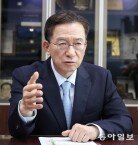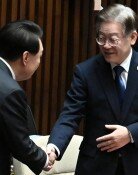Will Korea allow businesses to use electricity for heating?
Will Korea allow businesses to use electricity for heating?
Posted November. 26, 2013 07:51,
A dried seaweed laver maker in Gimhae, South Gyeongsang Province, changed fuel for its laver dryers from tax-exempt diesel fuel to electricity for agricultural use several years ago. As a result, the company significantly cut annual fuel cost from 240 million won (226,000 U.S. dollars) per year to 160 million won (151,000 dollars). But when the energy consumed is calculated in terms of diesel, the consumption increased 4.9 times from 162kL to 795kL. There are numerous casting factories that have changed their diesel-powered furnace to the electric furnace, and many farmers that have replaced heating fuel for their greenhouses with electricity. Even public saunas are changing their boilers to electric boilers. These are cases of societal wasting that have occurred due to cheap electric utility price in Korea.
Korea offers the lowest price of electricity in the world, which is also among the best in quality. Basically, it is due to nuclear power plants, whose unit power generation cost is cheaper than other sources. However, it is also partly due to the governments suppressing of electric utility price to the 94 percent level of the actual power generation cost. The former Soviet Union rationed bread at a very cheap price, saying that bread is the fundamental of peoples living. As a result, pig farmers would use bread as feed for their livestock. Can we ridicule that episode, when we are using electricity for heating?
The government raised electric utility rate by 5.4 percent recently. By type of use, electricity for industrial use (manufacturing) saw the biggest hike at 6.4 percent, which prompted the Federation of Korean Industries to issue a statement reading It reduces external competitiveness of industries. However, it is hardly persuasive for Korean companies to complain about electricity fees. It would be more accurate to say One of the factors of the manufacturing sectors robust growth is cheap and high quality electricity. Utility rate for industrial use is believed to be slightly exceeding the generation cost only after the latest hike, but it is still cheaper than electricity for ordinary use (non-manufacturing).
The real problem is that demand cannot be regulated because electricity is too cheap. Korea is a country that is excessively using electricity, whose electricity consumption relative to GDP amounts to 1.7 times the average of the OECD member states. The main culprit of excessive electricity consumption is not homemakers but companies. Per-capita electricity consumption for household use only amounts to 25 percent of that of the U.S. and Canada, and half that of Japan, Britain, France and Germany. It is not a matter for Korea to be blindly pleased to see foreign companies moving into the country to use cheap electricity.
The government sets basic electricity supply and demand plans, which project an outlook 15 years into the future every other year. The government has adjusted upward its forecast of electricity demand every time, and announced that Since electricity output will be expanded, and electricity shortage will be addressed several years from now. All those announcements have proven to be lies. It is in part due to disruptions in construction of power plants, but it was primarily due to demand far outpacing its projections. The government said, The latest hike in utility rate will slow the pace of demand growth. However, the projected reduction stemming from the hike only amounts to 800,000 kW, or just 1 percent of Koreas overall electricity output. If this practice continues, Korea will likely continue the weird way of demand management, in which factories are brought to halt and government buildings are not air-conditioned amid scorching summer weather.
Korea Electric Power Corp. now has a cumulative deficit exceeding 10 trillion won (9.4 billion dollars) after starting to face the trend of mounting deficits during the Lee Myung-bak administration (2008), which implemented inflation control through pressure by mobilizing the National Tax Service and the Fair Trade Commission. With its credit ratings plunged, KEPCO can hardly afford to make bids in overseas projects. This problem is serious to the state-run company because the firm has no extra financial capacity to make investment in new technology for the future. Recently, the energy industry is fast evolving into a high value-added high-tech sector through convergence with the ICT industry. This includes smart grid, green buildings, energy storage systems, and renewable energy. In order for Korea to spearhead this sector, to achieve low carbon, green growth by curving overuse of electricity, and to continue using quality electricity, it should build more power plants and secure an appropriate amount of resources for investment in research. Price incentives should be devised in such a way. The country should correct its system of electric utility rate that is still set below the generation cost, and which is distorted by type of use and according to voltage levels.
Then, what do we do with inflation? As economics tells us, it should be managed through monetary policy. Korea can no longer afford to use the method in which a visible hand suppresses the price of individual items. This years inflation rate stands at 1.3 percent level, and next years outlook is also stable at 2.4 percent. It is opportune time for the country to bring the utility rate system to normal.
Until when will the country leave unchecked ravish wasting of electricity in the way farmers grow pigs by feeding with bread, and people do the dishes with bottled drinking water?
Headline News
- Med professors announce intention to leave hospitals starting Thursday
- Bridge honoring Sgt. Moon Jae-sik unveiled in Pennsylvania
- Chief of Staff Chung tells presidential secretaries to stay away from politics
- US FTC bans noncompete agreements
- N. Korea launches cyberattacks on S. Korea's defense companies







